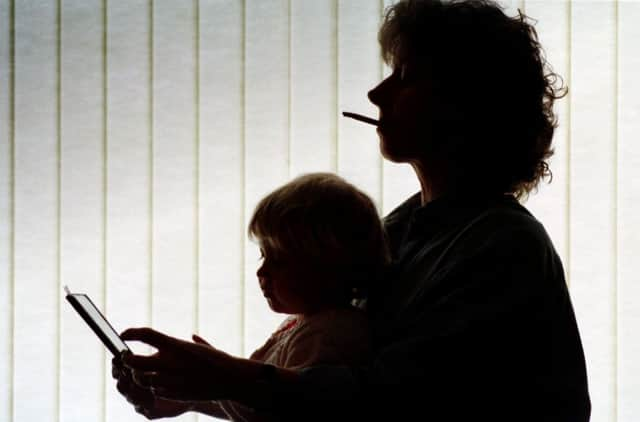Complacency is new enemy in war to save children from smoke harm


One question asked of households taking part in the Health Survey is whether any children are exposed to tobacco smoke in the home. This is because exposure to tobacco smoke causes a range of health problems. Children are particularly vulnerable. They breathe faster than adults, their lungs are still developing, and they often do not have the choice to remove themselves from a smoky environment.
In 2013 the Scottish Government committed to the world’s first, and still only, national target to reduce the proportion of children affected by tobacco smoke in the home. Aiming to reduce the 12 per cent of children affected in 2012 down to 6 per cent by 2020 offered substantive health benefits to 60,000 children across Scotland. This seemed commendably ambitious, but it was far from clear whether it could be achieved.
Advertisement
Hide AdAdvertisement
Hide AdSo the announcement that this year’s results from the survey work undertaken in 2015 showed the target had been met five years early was an unexpected delight. The figure represents a huge shift over a very short period of time. What happened?
There has been good engagement work going on at local level for some time. My own organisation has trained over 100 early years workers, giving them confidence to support parents who want to make their homes smoke-free. Evaluation suggests that this work is changing lives, but on its own it could not generate the dramatic shift we’ve just seen.
What did suddenly change was a sharp increase in public awareness, discussion and perception of the issue. The Government’s excellent Take it Right Outside campaign appeared during this period, and was based on an understanding of parents’ experience which we have helped to build up over years.
We know that making a home smoke-free is not always easy. Parents want to protect their children and most take some actions to do so, but many lack a garden or balcony to go to, others have nobody to look after the children while they go outside, many don’t know enough about the way that tobacco smoke lingers in the air and spreads from room to room, and some have family members who smoke and need persuading to buy into the idea of a smoke-free home.
The campaign provided good information, helpful tips and, most importantly, a supportive attitude. Having been tested out with groups of parents it was well placed to get through, and indeed, evaluated very well.
In addition, last year saw debates around the Scottish Parliament passing a bill to ban smoking in cars with children present – generating plenty of news coverage of the harm breathing tobacco smoke causes.
I cannot see what else could explain the huge, rapid shift in behaviour to protect children from tobacco smoke that these statistics show. We already have good evidence that public awareness campaigns on stopping smoking are effective in nudging people towards taking action, whether they go to support services (the most effective way to quit smoking) or do it themselves (the most common).
Unfortunately, we have not had mass media campaigns on stopping smoking for some time, and although the proportion of smokers who say they want to quit remains as high as ever, numbers at stop smoking services (which give the best chance of doing so) are dropping.
Advertisement
Hide AdAdvertisement
Hide AdI’m particularly conscious of this right now as the Stoptober programme kicks off again in England. The problem is lack of money for TV advertising – we have a strong body of research showing that cutting public health promotion makes poor economic sense because it leads to far greater costs in future.
Seeing most of the Health Survey media coverage focused on obesity confirmed what we already knew – that the long, steady but frustratingly slow decrease in smoking rates is accepted as the norm and isn’t considered newsworthy any more. But this is far from being a job done.
Even if Scotland’s smoke-free homes target appears to have been met early, it still leaves tens of thousands of children in Scotland affected. And this was, of course, a survey asking people to self-report if their children were affected. A separate question, asking if anyone in the household smoked in the home, suggested that a much higher 12 per cent of children still live in such homes.
As is the case with stopping smoking, creating a smoke-free home is often a journey rather than an event. It is reasonable to assume that many of those households have taken the message on board, are resolved to change and may identify as being smoke-free, but many have still got some way to go to fully achieve this.
But, again as with stopping smoking, the important thing is to progress on the journey – and with continuing encouragement and support, more people will get there. I am confident of this because people are not being forced to do anything. This is something that they themselves say that they want to do, and the motivation is their children’s health.
Valerie Smith is senior executive officer at Ash Scotland, www.ashscotland.org.uk